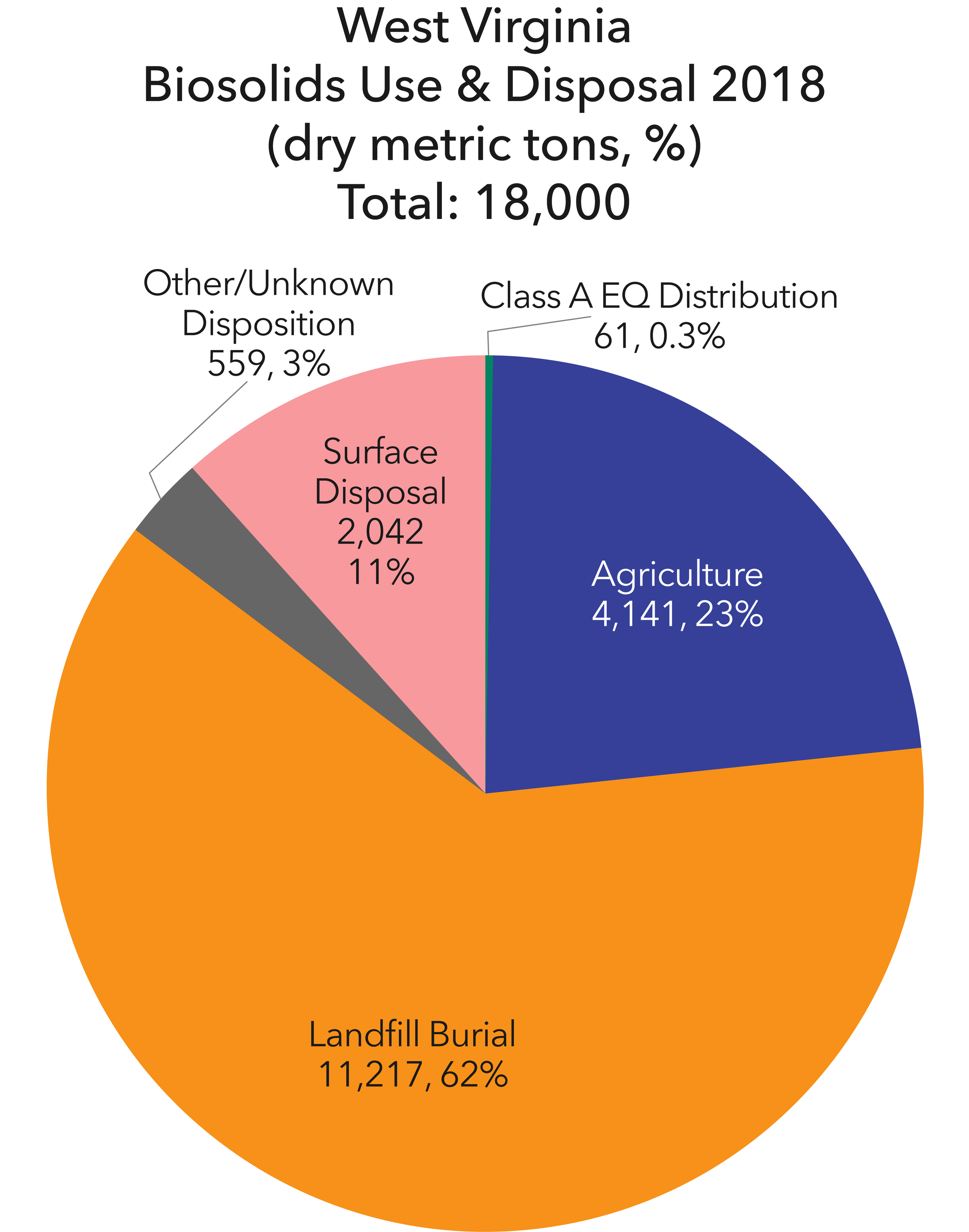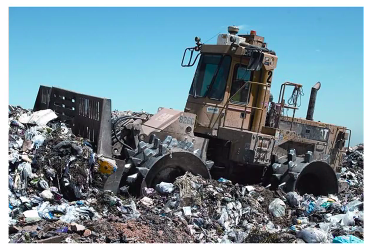State Data
Confidence in data for this state:
LOW
2018 data unless noted.
Definitions
Terms used on this website and in data sets are defined & discussed here.
State Statistics Dashboard
State Summary
● West Virginia (WV) – The Mountain State, with scattered, isolated cities and towns – is known for mining, energy (coal), chemical production, biotech, other manufacturing, and tourism. Its population of 1.8 million relies on landfills and land application for wastewater solids management. Both large and small communities land apply, with the larger ones, such as Morgantown, using anaerobic digestion (AD) to make Class B biosolids, and the smaller ones relying on aerobic digestion. Charleston, Huntington, and many other communities of all sizes send their wastewater solids to landfills. In 2018, there was no incineration of WV wastewater solids.
● The WV Department of Environmental Protection (WV DEP) regulates the state’s “municipal sewage sludge (MSS)... in two ways: through the issuance of National Pollutant Discharge Elimination System (NPDES) permits, and by defining wastes that can be disposed of in solid waste facilities under Section 4.13.h. of the DEP’s Title 33 Series 1 rules. The issuance of NPDES permits is the responsibility of the Division of Water and Waste Management (DWWM) of the WV DEP and is the primary method of regulating MSS disposal. When a wastewater treatment facility applies for an NPDES permit, a certain method of MSS disposal is chosen. Individual treatment facilities are free to choose from a total of four permissible disposal options… landfilling, land application, marketing of the sludge, or a catch-all ‘other’ option.”
● Charleston, West Virginia’s capitol and largest city (population ~45,000), treats an average of 10 million gallons per day (MGD) with the only pure-oxygen secondary treatment process in the state. Solids are anaerobically digested and dewatered with belt filter presses before being transported to a landfill owned and operated by Waste Management. The solids contribute some to methane generation in the landfill, much of which is captured and used as an alternative energy fuel.
● Huntington, the state’s 2nd largest city (~43,000 people) was facing a challenge in 2018: much of its solids were sent to a landfill in Ohio. But, because of odor complaints, that landfill stopped accepting the sludge, leaving only one other landfill option - and that landfill required alkaline addition before disposal. So the Huntington WRRF was looking at increased costs for lime of $40,000 - $80,000 a year.
● Morgantown, the 3rd largest city in WV (population ~30,000), was building a major upgrade in 2018 – 2022, including installation of membrane bioreactor technology for wastewater treatment and a third anaerobic digester (AD) for solids management. In 2018, 1,134 dry metric tons (dmt) of Morgantown biosolids were land applied for agriculture.


